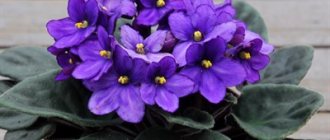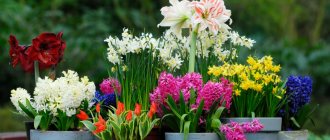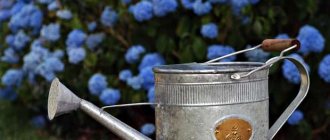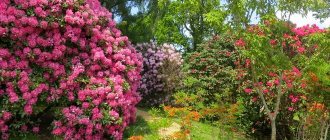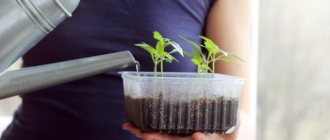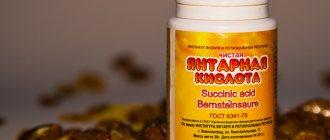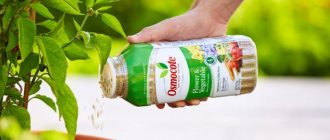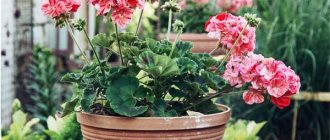Compared to indoor plants, flowers in the country are much easier to grow. They do not require as many fertilizers and minerals, since most of the nutrients are taken from the soil. Of course, the use of various fertilizers speeds up the growth of any plant. If we are talking about flowers in the country, then it is better to fertilize them in the spring, but it is also possible at other times.
Each plant variety requires an individual approach. The main thing is not to overdo it with fertilizers. Too much of them stimulates foliage growth by reducing flowers. In this article we will describe in detail all the care options and figure out what you can feed the flowers with in the spring.
Flowers at the dacha
In a suburban area you can grow different varieties of flowers. But they are all divided into two types: perennial and annual. Perennial flowers are not so demanding of additional fertilizers and feeding , since their root system is already formed and the plant constantly receives useful substances and fertilizers for active flowering from the soil.
With annual flowers it is a little more difficult. Every spring they go through the process of planting or breaking through the soil from seeds. Annual flowers are plants that grow, produce seeds, and die during one growing season. Depending on the type, annual plants can be transplanted anywhere on the site, regardless of the time of year. As a rule, annual flowers are used to form small flower beds, borders, and even plant them in hanging vases.
2022 fertilizer rating for flowering plants
When choosing mineral fertilizers, it is necessary to take into account the composition and acidity of the soil and additional addition of organic matter. Before purchasing, you should study the percentage of useful substances, dosage features and method of use.
"Rainbow Garden of Wonders"
The drug is made on the basis of vermicompost produced by earthworms. It is a universal remedy for flowers and shrubs; it is applied 2 weeks before buds begin to form, and again during active flowering. Contains nitrogen, potassium, humic compounds. Among the advantages are maintaining the plant’s immunity, protecting against bacterial infections and rot.
"Fertie Mix" from Giley
Inexpensive and high-quality fertilizers are produced in the form of a concentrate; they enrich the soil with B vitamins, phosphorus, nitrogen compounds and potassium. Suitable for tall house plants, garden flowers. But after watering, a sharp, specific smell may persist throughout the day.
"Nutrisol"
The fertilizer dissolves well in water and is applied under the roots of the bush. Contains basic mineral compounds, large amounts of iron and manganese. It is recommended to apply 2 times per season. Gives flowers a rich shade, prolongs flowering time, and is easy to dose.
"Fertika"
Can be used for root feeding and spraying of shrubs before flowering. Contains sulfur, potassium, phosphorus, copper, boron and molybdenum. Does not contain chlorine additives, does not stimulate the growth of green mass.
"Agricola"
Increases the intensity of budding by 25%, saturates with vitamins, microelements manganese, boron and zinc. Strengthens the root system, recommended for soil of any type and acidity level, available in the form of liquid or dry soil
Contains gibberellic acids, humates, polysaccharides, sodium and potassium. Prevents buds from drying out and increases their number by 20-30%. Suitable for spraying and root watering. Can be used for greenhouses and indoor flowers.
"Humisol"
Biological growth stimulator activates abundant flowering. Made on the basis of organic vermicompost, it protects flowers from diseases, rot, and is effective when sprayed in weak conditions.
Available in the form of concentrate, tablets and granules, it saturates the soil with humins, molybdenum, boron, copper and iron, and increases the level of magnesium and zinc. Recommended for roses, lilies, peonies and rhododendrons. Can be used only 1-2 times a season. High-quality fertilizing saturates the soil with useful substances, improves its composition, regulates acidity and alkaline composition. The fertilizers presented in the rating contain the main microelements necessary for plants during the flowering period, activate microflora, and protect against diseases.
Ventilation or soil drainage
There shouldn’t be any particular issues with the soil itself. It is best if it is black soil. But drainage for flowers is very important, especially in spring. Drainage is critical, especially after winter, otherwise the plants may suffocate and begin to rot due to lack of air circulation around the roots. Soil drainage is improved by adding 5-8 cm of organic material.
We remove a similar amount of compacted soil, carefully, without damaging the roots, and add compost, peat moss, chopped bark or manure in slightly larger quantities (since over time the fluffy material will also settle). If the soil is poorly compacted or clay based, 3-5cm of sand added along with organic material will further improve drainage.
How to use flowering stimulants
Flowering and fruiting stimulants are used in two ways: for soaking seeds, tubers or bulbs before planting and for spraying plants during budding. In both cases, use solutions of the drug, prepared according to the instructions and filtered, if the stimulant was in powder or crystalline form.
Each plant needs its own dose of stimulant and it is not recommended to exceed it. In addition, there are general rules for spraying plants:
- processing should be carried out in dry, windless weather;
- the solution must be warm so that the plant does not experience stress;
- Although stimulants are not phytotoxic, the gardener should wear a respirator and protect the skin and eyes.
Watering
Watering flowers in the spring should be done very carefully, since the soil is still quite damp after the winter snow has melted, although it may look dry on top. However, almost all flowers require regular watering, especially in warm weather.
But it is worth considering the fact that “overwatering” contributes to the development of diseases such as rot and fungus in particularly damp soil. So you shouldn’t water flowers in the spring more than once a week. It is necessary to water from a minimum height to the very roots, and not to spray water from a watering can on the leaves and flowers.
If the number of flowers in your area is very large, use special drip irrigation hoses. All water procedures must be performed in the morning so that direct sunlight does not evaporate the moisture too quickly.
How often should you water indoor flowers? It all depends on the variety and specific species. The website “Sadim.Guru” presents a huge number of articles on various types of indoor plants; just use the search.
What time and how many times should I feed flowers in the garden?
At each stage of development, garden flowers require different types of fertilizers. This is due to the fact that perennials develop wildly in the spring, then bloom, and retire in the fall. Spring small-bulbed flowers and tulips, on the contrary, are only planted in the fall so that they bloom in early spring. Therefore, it is very important to know the stage of flower development in order to help them develop correctly in time.
Important! It is necessary to follow the recommended dosage of fertilizer mixtures. Usually the package indicates the proportion of mineral fertilizers used for each type of plant.
The fertilizer application scheme for perennial garden flowers looks like this:
- spring fertilizing with nitrogen fertilizers for growth (15–20 g/sq. m);
- during the formation of buds - water the roots with organic fertilizers (1:10) with the addition of 10 g of ammonium nitrate and 15 g of potassium sulfate per bucket of solution;
- in July, liquid fertilizing with ammonium nitrate, potassium sulfate and superphosphate (15 g: 15 g: 20 g per 10 liters of water);
- August - superphosphate and potassium for better ripening of shoots and seeds (15 g per 10 liters of water).
How to fertilize annual flowers? A combination of organic and mineral fertilizers.
- April - infusion of mullein or bird droppings (1:10);
- May - nitrophoska or Kemira (15 g per 10 liters of water);
- June - mullein infusion or complete mineral fertilizer (7-10 g per 10 liters of water).
Spring bulbous
- April - 15–20 g of ammonium nitrate per 1 sq. m;
- May—15–20 g of Kemira or nitrophoska per 10 liters of water.
Fertilizer
Timely application of plant fertilizers to the soil, especially during planting, will provide sufficient nutrients for any variety of flowers for several weeks. After about a month, fertilizer can be applied again. Fertilizers are applied for the third time already in mid-summer, if they are needed (individually for different varieties).
Note!
General purpose granular or liquid fertilizers will work equally well for all flowers in the garden. Although liquid fertilizers are better suited for annual plants that have only recently appeared in the flower bed from seeds or after transplanting from a nursery.
Before using any type of mineral fertilizer, carefully read the label to determine the rate and dose for each specific plant. Use fertilizers sparingly, working them only into the soil rather than spraying them onto the foliage. After applying fertilizer, the flowers must be watered, as the concentrated composition can burn the roots. The best option would be to dilute the fertilizers in water in advance.
What kind of soil do flowers need? Ways to improve soil
A beautiful flower garden in a garden largely depends on the quality of the soil in the garden.
What soil is needed for garden flowers, and what fertilizers should be applied?
Garden flowers grow well in fertile, not heavy soil, with neutral acidity and quite light.
Most garden flowers do not tolerate acidic soil, that is, an environment with a pH value less than six (can be checked using a test strip from a flower shop). You can reduce acidity using quicklime.
Using mulch
Mulch is useful for many flowers, as it retains moisture well in the soil and prevents the roots from heating up on hot days. In addition, mulch helps control weed populations. But such a fertilizer is not particularly suitable for indoor flowers in ordinary home conditions.
It is best to use organic mulch, as any inorganic material will heat up significantly, first burning the plant and then transferring all the accumulated heat to the soil. It is best to use bark shavings, pine needles, dry compost or just dry grass. The height of the mulch layer should not exceed 7-8 cm, since a larger layer will contribute to an increase in populations of slugs and other harmful insects.
Using compost as a basic fertilizer
The easiest way to keep your flowering garden in top condition is to add a certain amount of compost to the soil each spring. Spread the compost evenly over the surface of the ground in a layer of about 10 cm, as soon as all the snow has disappeared from the ground and it has dried out a little.
By performing this simple procedure every spring, the amount of nitrogen, phosphorus, potassium and other chemical compounds required by plants will slowly be released into the soil. Thus, you will not have to resort to additional fertilizing methods for a long period of time, and such flower feeding in the spring will be very useful.
Instead of compost, you can use fresh manure mixed with granular all-purpose fertilizers, which are sold at any farm store. These activities will encourage new, healthy growth in the spring, when plants are most in need of additional nutrients. Store fertilizer on the leaves and water well after application.
Soil - improvement with organic fertilizers
Organic fertilizer is a natural fertilizer that contains all the nutrients necessary to improve the soil and for better plant growth.
- Compost is a fertilizer that does not require cash costs, because... is rotten waste from your own garden (weeds, leaves). To make compost, select a shaded place in which a hole is dug. Herbaceous waste is placed in the pit and periodically watered with water for rapid rotting. Suitable for all types of plants.
- Peat is a fertilizer that is used within a year after composting. For better effect, wood ash, manure and bird droppings are added to the peat pile. For 100 kg of peat no more than 4 kg of mixture. After a month and a half, the pile is dug up and used as an ideal fertilizer.
- Bird droppings are an “ambulance” for restoring the vital activity of weakened plants, because contains an unprecedented amount of nutrients. This fertilizer is used very carefully: inappropriate fertilizing can cause the plant to burn. First, they insist in the sun for three days (a third of a bucket of bird droppings is mixed to the top with water), and then the resulting mass is diluted with water in a ratio of 1: 4 and watered. After this, the plants are watered again, but with ordinary water.
- Manure is the best organic fertilizer, but fresh manure should not be used. Approximately 35 kg per 10 m2 is applied to clay soil, and twice as much for sandy soil.
- Humus is decomposed manure and is suitable for absolutely all crops.
- Leaf soil is a fertilizer that takes two years to produce. To do this, in the fall, the leaves of the trees are placed in a stack and watered with slurry on top. In the spring they dig up this place, and in the summer they moisten it with water. In the second year, the fertilizer is ready.
- Sludge is a fertilizer made from silt and is extracted from fresh water bodies. It is applied to the soil in the fall.
- Green manure is the best and most economical way to enrich the soil at your dacha.
You can read about the use of growth stimulants for plants in the garden here. Good luck, gardeners!
svetok-v-podarok.ru
Required tools and materials
To care for flowers in your country house or suburban area, you will need standard gardener tools, namely:
- Bayonet shovel.
- Rake.
- Garden shears, pruning shears or small lopper.
- Weeding knife.
- Watering hose.
- Several buckets.
- Watering can.
- Spray.
- Punch.
- Gardening gloves.
- Cultivator.
